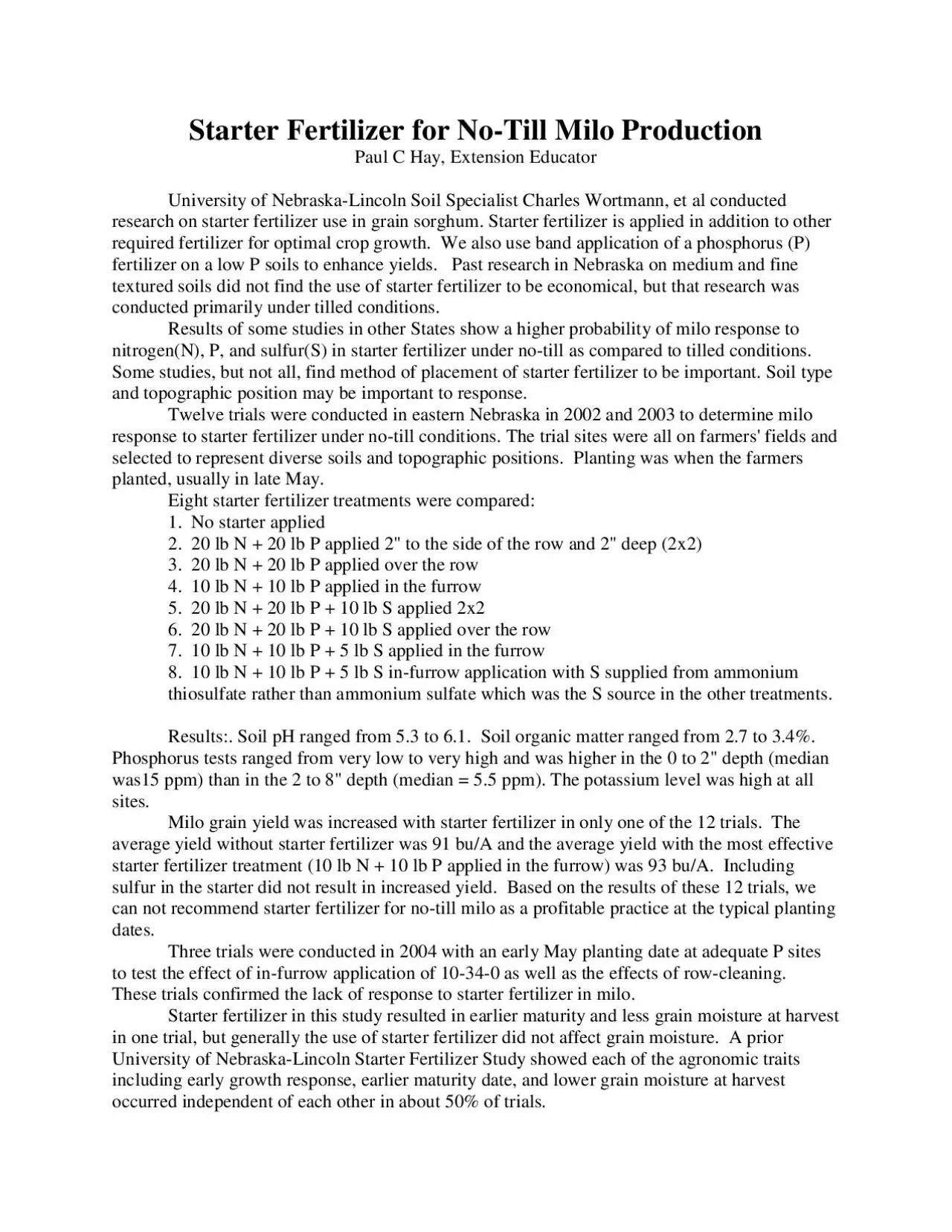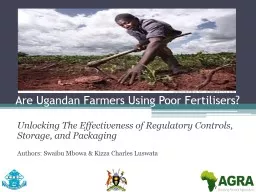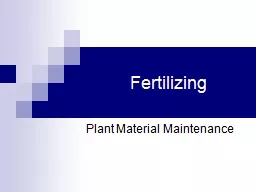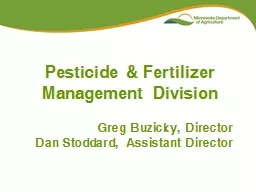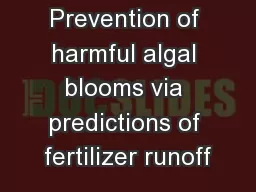PDF-Starter Fertilizer for No
Author : winnie | Published Date : 2020-12-07
Till Milo Production Paul C Hay Extension Educator University of Nebraska Lincoln Soil Specialist Charles Wortmann et al conducted research on starter fertilizer
Presentation Embed Code
Download Presentation
Download Presentation The PPT/PDF document "Starter Fertilizer for No" is the property of its rightful owner. Permission is granted to download and print the materials on this website for personal, non-commercial use only, and to display it on your personal computer provided you do not modify the materials and that you retain all copyright notices contained in the materials. By downloading content from our website, you accept the terms of this agreement.
Starter Fertilizer for No: Transcript
Download Rules Of Document
"Starter Fertilizer for No"The content belongs to its owner. You may download and print it for personal use, without modification, and keep all copyright notices. By downloading, you agree to these terms.
Related Documents

